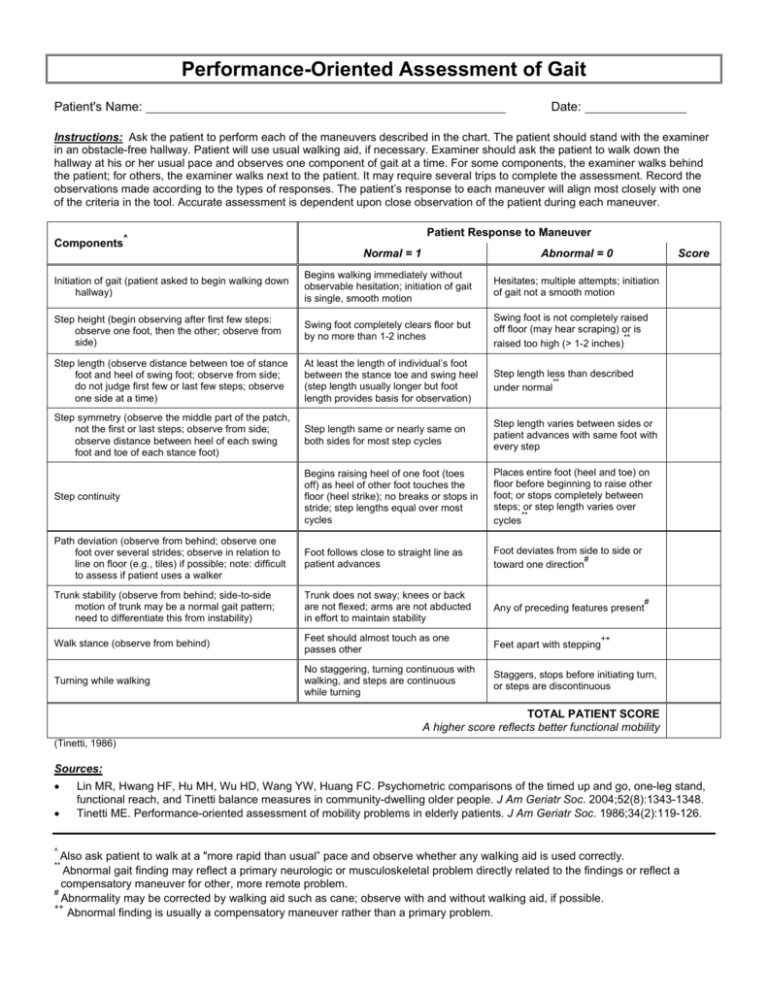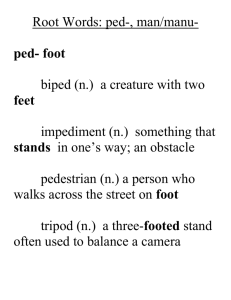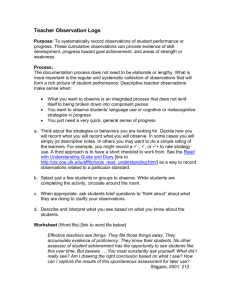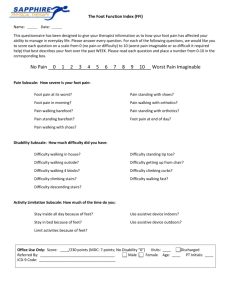Gait Assessment Form: Performance-Oriented Mobility Evaluation
advertisement

Performance-Oriented Assessment of Gait Patient's Name: Date: Instructions: Ask the patient to perform each of the maneuvers described in the chart. The patient should stand with the examiner in an obstacle-free hallway. Patient will use usual walking aid, if necessary. Examiner should ask the patient to walk down the hallway at his or her usual pace and observes one component of gait at a time. For some components, the examiner walks behind the patient; for others, the examiner walks next to the patient. It may require several trips to complete the assessment. Record the observations made according to the types of responses. The patient’s response to each maneuver will align most closely with one of the criteria in the tool. Accurate assessment is dependent upon close observation of the patient during each maneuver. Patient Response to Maneuver ^ Components Normal = 1 Abnormal = 0 Score Initiation of gait (patient asked to begin walking down hallway) Begins walking immediately without observable hesitation; initiation of gait is single, smooth motion Hesitates; multiple attempts; initiation of gait not a smooth motion Step height (begin observing after first few steps: observe one foot, then the other; observe from side) Swing foot completely clears floor but by no more than 1-2 inches Swing foot is not completely raised off floor (may hear scraping) or is ** raised too high (> 1-2 inches) Step length (observe distance between toe of stance foot and heel of swing foot; observe from side; do not judge first few or last few steps; observe one side at a time) At least the length of individual’s foot between the stance toe and swing heel (step length usually longer but foot length provides basis for observation) Step length less than described ** under normal Step symmetry (observe the middle part of the patch, not the first or last steps; observe from side; observe distance between heel of each swing foot and toe of each stance foot) Step length same or nearly same on both sides for most step cycles Step length varies between sides or patient advances with same foot with every step Step continuity Begins raising heel of one foot (toes off) as heel of other foot touches the floor (heel strike); no breaks or stops in stride; step lengths equal over most cycles Places entire foot (heel and toe) on floor before beginning to raise other foot; or stops completely between steps; or step length varies over ** cycles Path deviation (observe from behind; observe one foot over several strides; observe in relation to line on floor (e.g., tiles) if possible; note: difficult to assess if patient uses a walker Foot follows close to straight line as patient advances Foot deviates from side to side or # toward one direction Trunk stability (observe from behind; side-to-side motion of trunk may be a normal gait pattern; need to differentiate this from instability) Trunk does not sway; knees or back are not flexed; arms are not abducted in effort to maintain stability Any of preceding features present Walk stance (observe from behind) Feet should almost touch as one passes other Feet apart with stepping Turning while walking No staggering, turning continuous with walking, and steps are continuous while turning Staggers, stops before initiating turn, or steps are discontinuous # ++ TOTAL PATIENT SCORE A higher score reflects better functional mobility (Tinetti, 1986) Sources: • • ^ Lin MR, Hwang HF, Hu MH, Wu HD, Wang YW, Huang FC. Psychometric comparisons of the timed up and go, one-leg stand, functional reach, and Tinetti balance measures in community-dwelling older people. J Am Geriatr Soc. 2004;52(8):1343-1348. Tinetti ME. Performance-oriented assessment of mobility problems in elderly patients. J Am Geriatr Soc. 1986;34(2):119-126. Also ask patient to walk at a "more rapid than usual” pace and observe whether any walking aid is used correctly. Abnormal gait finding may reflect a primary neurologic or musculoskeletal problem directly related to the findings or reflect a compensatory maneuver for other, more remote problem. # Abnormality may be corrected by walking aid such as cane; observe with and without walking aid, if possible. ++ Abnormal finding is usually a compensatory maneuver rather than a primary problem. **






